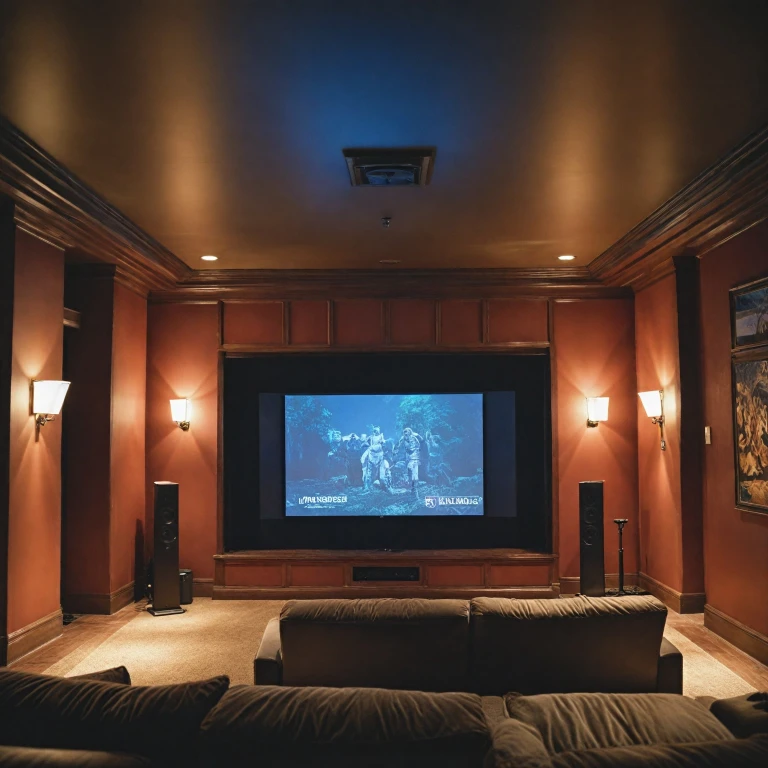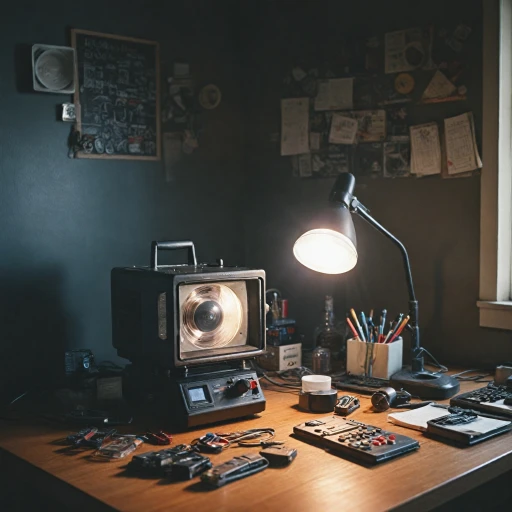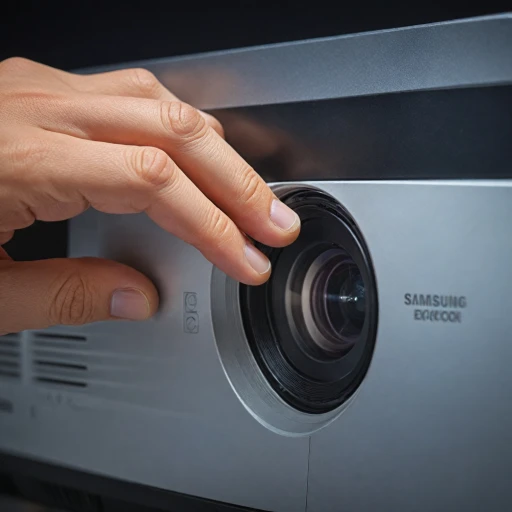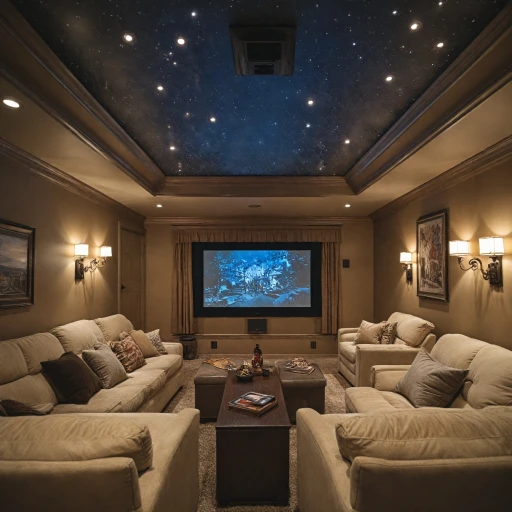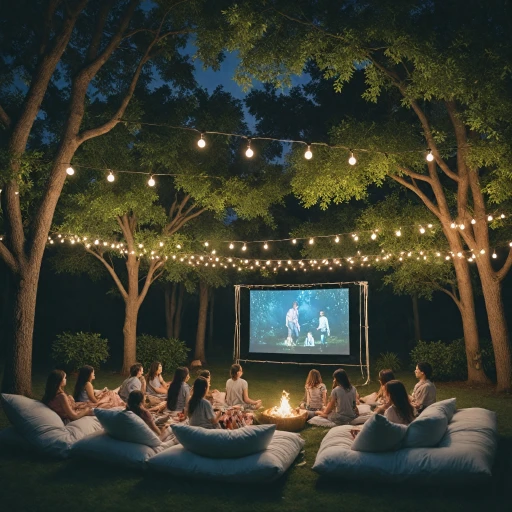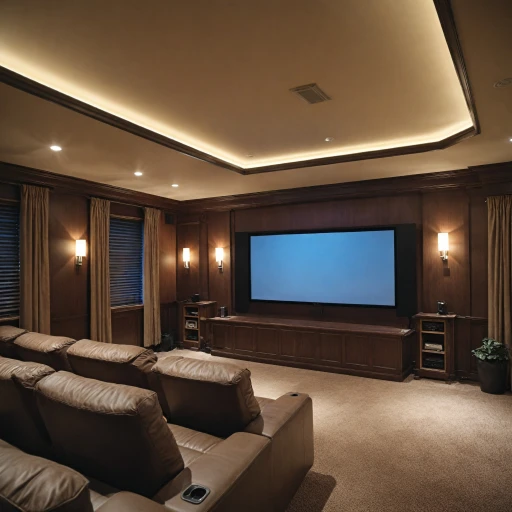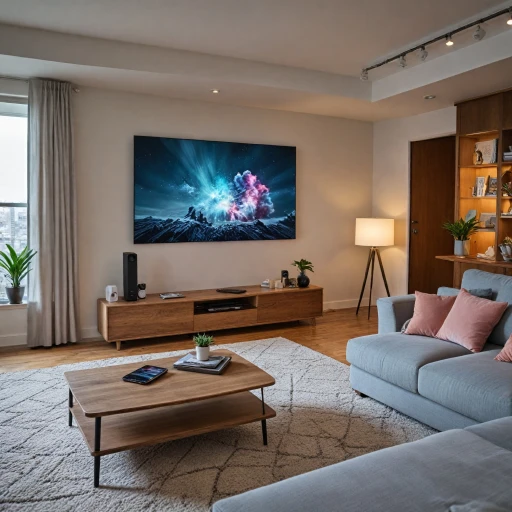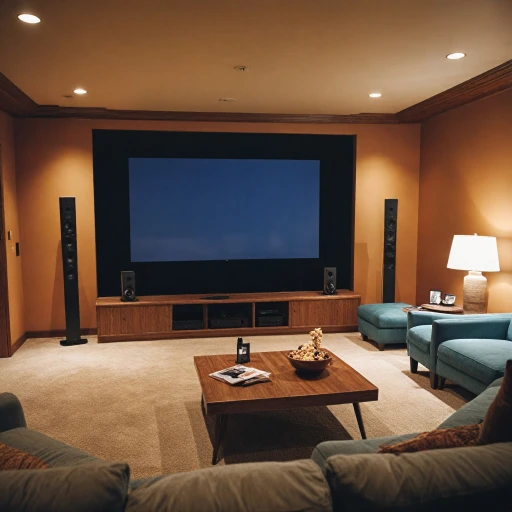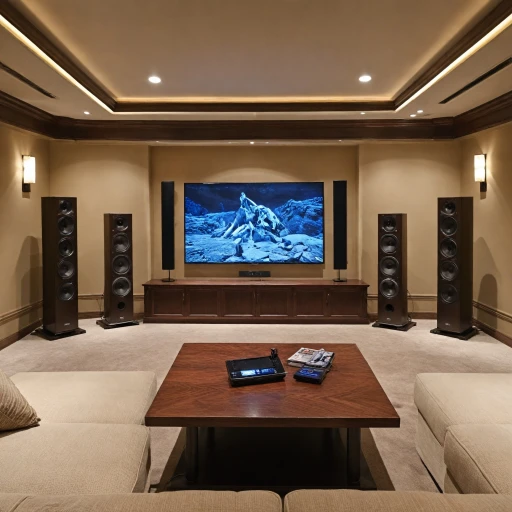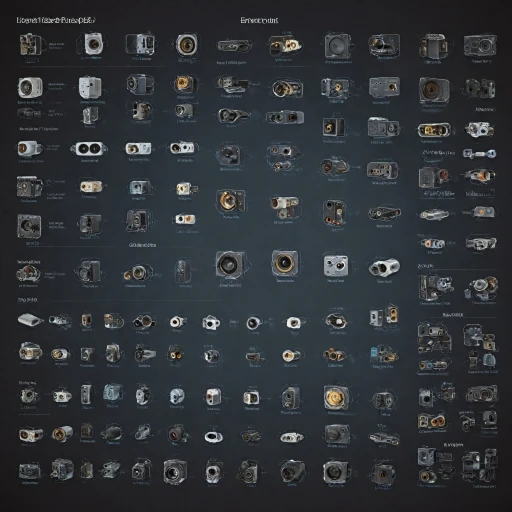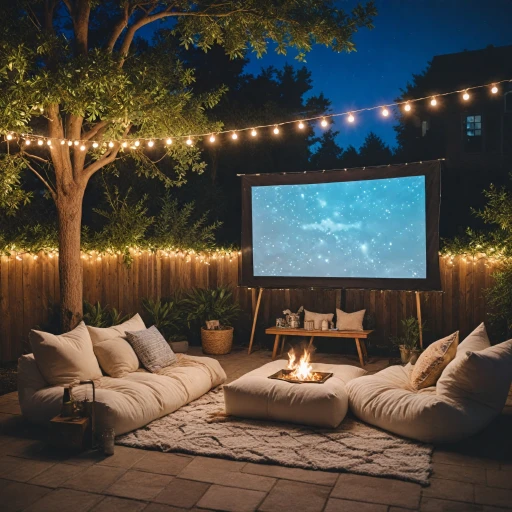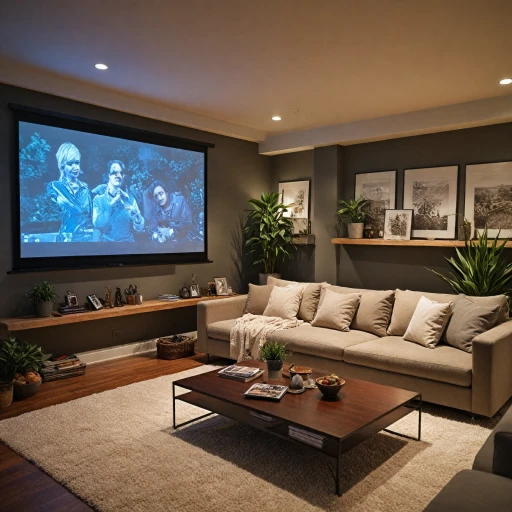
The Importance of Screen Size in Home Theaters
The Role of Screen Size in Crafting the Ultimate Viewing Experience
When setting up your home theater, the screen size plays a critical role in shaping your viewing experience. A projector's screen isn't merely a surface to display images; it sets the stage for the overall immersion and enjoyment of your cinema setup. Choosing the right screen size ensures that every scene is reproduced with optimal clarity and detail, enhancing the quality of what's projected onto the wall.
An appropriately sized projector screen can make the difference between cinematic bliss and a cluttered mess of under or oversized visuals. Projector technology has evolved, introducing a series of projectors and various screen types, each accompanied by different aspect ratios and screen sizes designed to cater to diverse room dimensions and viewing preferences. Understanding these elements helps in determining the best configuration for your home theater space, leading to the best possible image quality and viewing pleasure.
Notably, the context of your room, the projection type, and the throw distance all influence how you perceive the image. With short throw and ultra short throw projectors, you can achieve larger screen sizes even in tighter spaces, making them ideal for compact home theaters. The balance between screen height and viewing distance also plays into this decision, guiding you to achieve optimal brightness and detail.
To explore more about making exciting choices and getting the right projector setup, visit the perfect projector and stand for your home theater guide.
Factors Influencing the Choice of Screen Size
Considerations for the Perfect Projection Setup
Determining the ideal screen size for your home theater is not merely about picking the biggest screen available. Several factors come into play, each contributing uniquely to the overall viewing experience. Firstly, the type of projector you plan to use significantly affects screen size. Short throw and ultra short throw projectors have different requirements when it comes to distance from the screen. Understanding the throw ratio of the projector is crucial for optimal image quality. Ambient light is another consideration. A well-lit room may require a different screen size or type when compared to a darkly lit home theater. Ambient light can wash out the image, necessitating a careful balance between screen brightness and projector strength. The size and dimensions of your room will also dictate certain choices. Pay attention to the viewing distance, which impacts how the image is perceived. Ideally, the viewer's position should allow for full immersion without causing strain. For more on optimizing your setup, including adjusting the projector's throw height, you might find this guide helpful: How to Adjust the Throw Height of the LS12000 Projector for Optimal Viewing. Aspect ratio is paramount. It determines the shape and style of the image you're projecting. Typical home theater screens conform to standard aspect ratios—like 16:9—but understand what works best for your media consumption. Concluding the choice of screen size involves a blend of these components, ensuring the projector's projection aligns perfectly with screen space, light control, and room dynamics. Your investment in understanding these factors will significantly enhance your home theater experience.Standard Screen Sizes and Aspect Ratios
Common Dimensions and Proportions Explained
When setting up your home theater with a projector, selecting the right screen size is crucial. One key aspect to consider is the aspect ratio of your screen, which affects both the image and the overall viewing experience. Different projector screens have varying aspect ratios, most commonly 16:9 and 4:3. The 16:9 ratio, known as widescreen, is ideal for modern high-definition content and provides an expansive viewing experience. This is particularly effective with projectors designed to project onto large screens in a home theater setting. On the other hand, the 4:3 ratio is a more traditional format that can still be useful for older content.Considering the Right Size for Your Needs
Determining the right screen size depends on various factors in your theater. Screen dimensions typically range from 80 to 150 inches diagonally. Short throw projectors, for instance, can cast a large image from a close distance, making them suitable for smaller rooms. On the other hand, ultra short throw projectors provide even more flexibility when space is limited. Regarding projection screens, fixed frame screens offer a consistent tension that ensures a smooth surface ideal for high-quality picture delivery. In contrast, pull screens and tab tension options allow for more versatility if you need to adjust the setup or store the projection screen when not in use.Adaptability and Viewing Comfort
Projector screens, whether fixed or retractable, should work well with the ambient light in your room. Ensuring the right balance will enhance your viewing experience. The optimal viewing distance from the screen will also affect the image quality and comfort of those watching. Aim for a distance that allows everyone to enjoy the projection without straining their eyes. Finally, remember to maintain your equipment for the best performance. For effective maintenance tips, you can learn more about cleaning your projector lens efficiently. Keeping all these factors in mind will help create a compelling and immersive theater experience in your home.Calculating the Optimal Screen Size for Your Space
Finding the Perfect Fit for Your Home Theater Space
Calculating the optimal screen size for your home theater projector involves several key factors that ensure your viewing experience is both comfortable and immersive. The screen size is not just about personal preference, but also about balancing the screen's dimensions with the room's layout and the projector's specifications.
Here's how to find the best screen size for your space:
- Viewing Distance: Start by measuring the distance from the primary seating area to the potential location of the screen. This distance will largely dictate the appropriate size of the projection screen. A general rule of thumb is to have the screen width equal about one-third of the distance to the closest seat.
- Aspect Ratio: Determine which aspect ratio suits your content consumption habits. A 16:9 ratio is commonly used for HD and 4K content, whereas a 2.35:1 ratio fits cinema-wide formats. Aspect ratios can influence how certain images fill the screen, often referred to as letterboxing or pillar-boxing.
- Room Lighting Conditions: Consider ambient light levels in your room. A room with controlled lighting allows for a larger screen and better image quality as it limits the impact of ambient light on the projection. Conversely, brighter rooms might necessitate a smaller screen or specialized projection screens that combat the effects of light.
- Projector Specifications: Analyze the type of projector you have. Short throw and ultra-short throw projectors allow for a larger image in a tight space, reducing the need for large viewing distances. Understanding the throw distance and projector brightness will also help in deciding on the perfect screen size.
- Ceiling and Floor Considerations: The height of the room and the method of screen installation (such as ceiling mounting or floor rising) can further influence the optimal screen size. Ensure that the screen height is comfortable for viewing, neither too high nor too low relative to the seating position.
By considering these elements, you’ll be able to identify the most suitable screen size that provides an immersive and comfortable viewing experience tailored to your specific home theater environment.
Comparing Fixed vs. Retractable Screens
Choosing Between Fixed and Retractable Screens
When setting up your home theater projector, one of the essential decisions revolves around the type of projection screen that best suits your room and viewing experience. Fixed frame and retractable screens each offer distinct advantages, and understanding these can help you make the best choice for your setup. Fixed frame screens are often praised for their ability to maintain superior image quality due to a perfectly tensioned screen, which can significantly enhance the viewing experience. Their screens are permanently mounted, typically on the wall, providing a stable surface that ensures the projected image remains consistent and free from ripples. This configuration is ideal for dedicated home theater rooms where space isn't a concern, and you seek optimal image quality paired with the chosen aspect ratio and screen size. On the other hand, retractable screens provide flexibility and space efficiency. These screens can be installed on the ceiling or wall and can be pulled down when needed, retracting back when not in use. They are particularly useful in multipurpose spaces where the room doubles as a living area. Options include both manual pull screens and motorized versions, such as tab tension models, which keep the screen flat and smooth, optimizing the throw distance and image quality regardless of room lighting conditions. In short, the choice between fixed and retractable screens should consider your room type, space constraints, and how integral the theater setup is to your home. For instance, in a modern setup with ultra-short throw projectors or in environments with ambient light, a fixed frame screen might offer better performance. Conversely, if flexibility and room versatility take precedent, a retractable screen, possibly a floor rising or ceiling-mounted model, might be the way to go. Your choice will impact not just the initial setup but the long-term viewing pleasure too, empowering your home theater with the best screen solution.Tips for Enhancing Your Viewing Experience
Improve Your Visual Engagement
To truly enhance your watching experience, you need more than just an ideal screen size. Consider these additional tips that can significantly elevate your home theater setup:- Ambient Light Control: Minimize ambient light in your viewing room to maintain optimal image quality. Light control curtains or dimmable smart lights can help you achieve the perfect dim setting.
- Sound System: Invest in a quality sound system or soundbar that complements your projector for immersive audio.
- Seating Distance: Adjust your seating to the optimal distance based on the projector's throw ratio and screen size. A good rule of thumb is 1.5 to 2.5 times the screen size.
- Adjustable Screens: Utilize adjustable or floor rising projector screens for flexibility in different viewing environments.
- Projector Placement: Ensure that your projector is appropriately placed, be it ceiling mounted or on a shelf, to match the throw type and produce a clear, distortion-free image.
- Blackout Fabric: Consider using blackout fabric on walls for fixed frame projector screens to reduce reflections and improve image contrast.
- Tab Tension Screens: For those using pull-down screens, tab tension designs ensure a flat, wrinkle-free surface for best image clarity.
Emphasizing these factors will enhance your viewing experience, allowing you to get the best out of your projector setup. Your home theater should be a space where screen size, aspect ratio, and other elements harmonize seamlessly, creating a captivating environment for enjoying movies, series, and much more.
